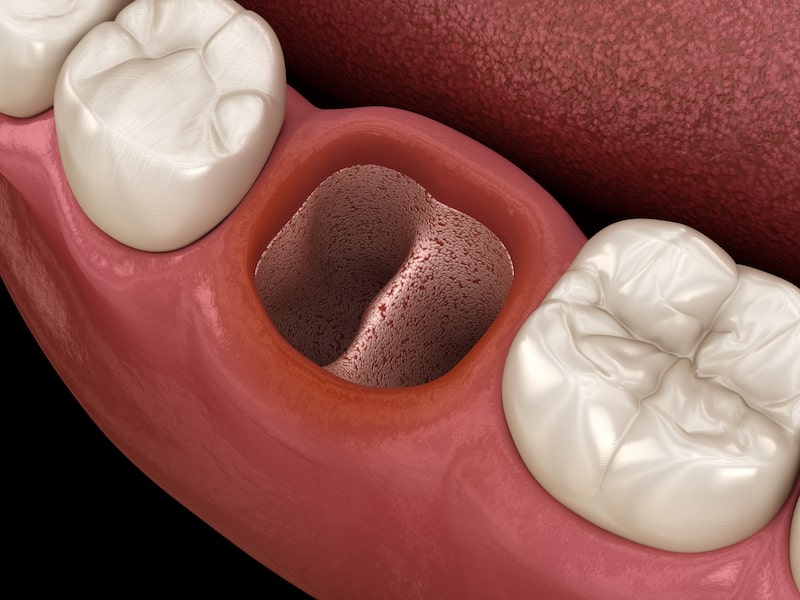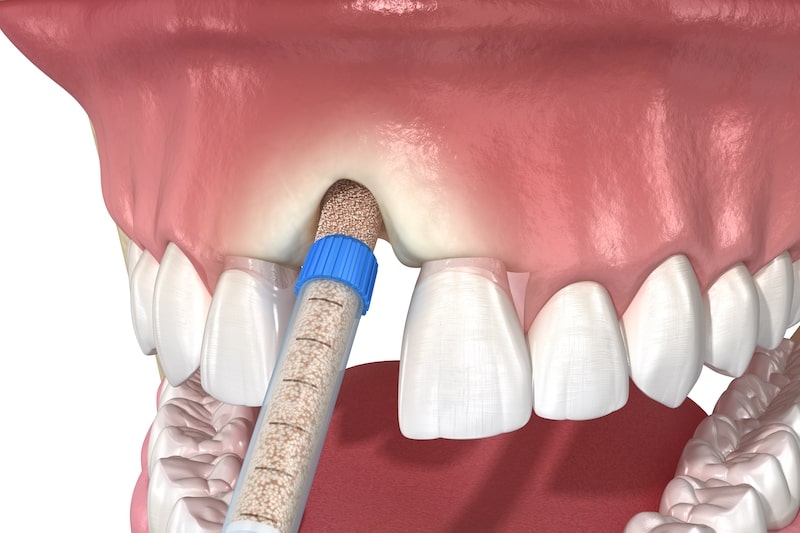5 Things NOT to Do After Having a Tooth Pulled
3 Minute Read:
Having a tooth pulled can be traumatic enough without suffering through “dry socket,” a painful condition that occurs in up to five out of 100 patients after dental extraction.

What Is a Dry Socket?
Dry socket, or alveolar osteitis, occurs when the blood clot that forms after a tooth is pulled becomes damaged or dislodged.
Without the protection this clot provides, the underlying bone and surrounding nerves become exposed. Many movements and any debris that get into the empty hole in your gums can trigger severe pain in the area.
Following These 5 Steps Can Help You Avoid Dry Socket
1. Don’t Use a Straw
Using a straw during the first week after extraction can put pressure on the clot, causing it to dislodge. The same goes for cups with tops that have a lip opening to drink from.
2. Don’t Spit
Spitting can also put pressure on the blood clot. While you should rinse out your mouth when needed after an extraction, it’s advised to let the water drip from your mouth slowly to avoid dry socket.
3. Don’t Smoke
Besides putting pressure on the clot, smoking or using oral nicotine products increases bleeding and interferes with the clotting process, often leading to dry socket.
Try using this time to quit smoking. Besides being bad for your teeth and gums, it’s extremely harmful to your overall health.
4. Refrain From Brushing the Extraction Site While It Heals
Brush normally, but address the surrounding teeth carefully to avoid touching the site for four to five days.
5. Avoid Hard, Crunchy Foods
Stick to soft foods like yogurt, mashed potatoes, soup, etc., for the first week while avoiding hard, crunchy, chewy foods and snacks like steak, popcorn, and nuts,
Other Recommended Steps to Ensure Ideal Healing After a Tooth Extraction
To prevent bone loss through the process of resorption, which can occur rapidly after teeth are extracted, some dentists may advise you to undergo socket preservation / alveolar ridge preservation, which is a bone grafting procedure to rebuild lost bone.
This is a procedure designed to reduce bone loss after tooth extraction and serves three purposes:
- To preserve and/or rebuild the jawbone
- To reduce the need for further bone grafting before receiving dental implants
- To allow ideal dental implant placement for a better long term and aesthetic result.
What’s Involved in Socket Preservation?
Socket preservation entails immediate intervention after the extraction. The socket is fortified with a bone substitute, covered with a barrier membrane, and then closed with sutures.
Dental Implant Preparation

If dental implants are planned to replace the extracted teeth, and bone loss has already occurred, an expanded graft will be necessary. This is also referred to as a ridge augmentation.
In a soft tissue ridge augmentation, tissue is harvested from another area of your mouth, or a tissue substitute is used to augment your existing gums.
In a hard tissue ridge augmentation, a bone graft is placed under the gums for integration into the bony ridge.
Do You Need an Extraction or Dental Implants in Beverly Hills, CA?
Dr. Afshin Salamati offers expert dental care with the ideal health of your smile as his number one priority. He also offers priority emergency dental services in Beverly Hills.
If you have concerns about your teeth and gums or are considering dental implants as a solution to your missing teeth, call us today!
